
new paper led by Andressa Nauter-Alves assessing controls on trace elements (Mg, Sr, B, Li /Ca) in multiple species of benthic foraminifera using a large compilation of coretop samples (>1500 sites).
dx.doi.org/10.1029/2025...
@mudwaterclimate.bsky.social
Climate scientist and geochemist @UnivofStAndrews | CO2 & ocean circulation past & present | Social & Environmental justice

new paper led by Andressa Nauter-Alves assessing controls on trace elements (Mg, Sr, B, Li /Ca) in multiple species of benthic foraminifera using a large compilation of coretop samples (>1500 sites).
dx.doi.org/10.1029/2025...

"Despite the difficulties getting everyone to agree on how to tackle climate change, real-world solutions are being implemented at speed almost everywhere."
Love this #COP30 takeaway from
@georginarannard.bsky.social. Just because countries aren't acting at scale doesn't mean the rest of us can't!

NEW: I wrote about British churches installing heat pumps, in some cases in 1,000-year-old buildings! Decarbonisation may not be easy, but many view it as an act of faith.
This is a special feature to mark The Reengineer’s first anniversary! Spread the word! 🥳
www.thereengineer.pro/p/let-there-...
In the case of coastal upwelling zones, yes! In the offshore gyres acidification tracks the atmosphere, but this water is then subducted & gets additional carbon from remineralisation, pushing it into CO2 chemistry space where the acidification from that initial CO2 uptake is amplified
13.11.2025 13:53 — 👍 2 🔁 0 💬 1 📌 0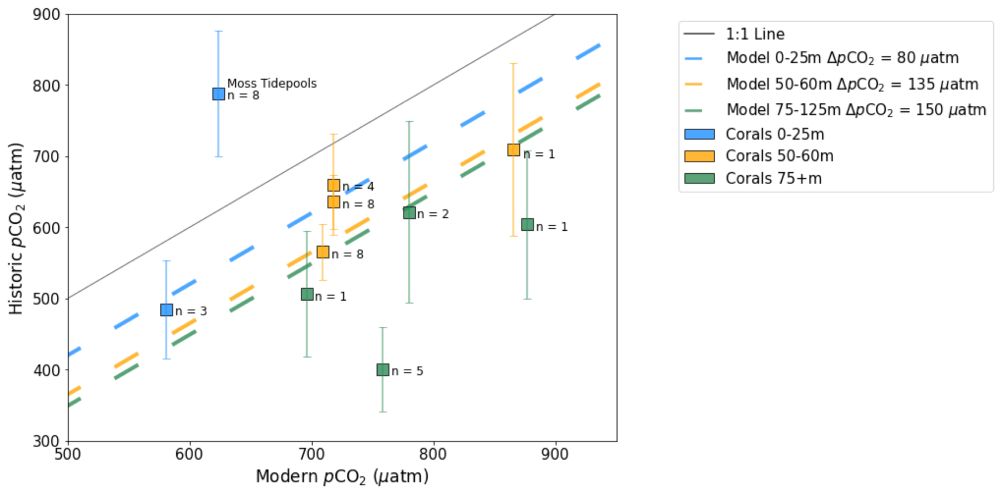
Fossil coral boron isotope data used to reconstruct California Current pCO2. In a non-acidifying ocean, the data should fall on the grey 1:1 line. Instead they fall below, indicating an acidifying ocean, and show greater acidification at greater depths (symbol colour), consistent with model simulations (dashed lines) - a phenomenon explained on the next figure!

Upwelling zones, like the California Current System, experience amplified ocean acidification, as the anthropogenic CO2 taken up in the offshore waters - which then get subducted and go on to feed the upwelling zone - is added to by carbon from remineralisation. This means that the upwelling waters end up in a much more carbon-rich part of total alkalinity (TA) versus dissolved inorganic carbon (DIC) space, where CO2 (and pH) contours are much closer together. The result is that 100 ppm carbon uptake offshore results in a nearshore pCO2 change of 300 ppm.
🚨Out today, acidification of the California Current🚨
Using corals and models we show regionally amplified acidification, due to the combo of CO2 uptake and remineralisation. This highlights potential risks to productive upwelling zones in an acidifying ocean 🌊🧪⚒️📈
www.nature.com/articles/s41...
Sure! And great work @jfarmersalmanac.bsky.social and @oceanandclimate.bsky.social for the fascinating paper and threads!
03.10.2025 05:08 — 👍 1 🔁 0 💬 0 📌 0Kudos to Maddie for leading this work and many thanks to @willerstorfi.bsky.social @gmacgilchrist.bsky.social @oceanicandrea.bsky.social Casimir de Lavergne & Laurie Menviel for all their help and input, @uniofstandrews.bsky.social for funding Maddie’s PhD, and all of you for reading!
17.09.2025 17:49 — 👍 6 🔁 0 💬 0 📌 0We are psyched about this as the ice ages are cool (sorry!) - but also as figuring out these processes by which the ocean took up 100s of gigatonnes of CO2 from the atmosphere in the past may help us better understand the controls on its capacity for carbon uptake in the future… 📈🌊
17.09.2025 17:49 — 👍 4 🔁 2 💬 1 📌 0
Reconstructions of biogeochemistry from the high latitude North Pacific and Southern Oceans share similar structure over the ice ages
This likely acted in concert with other processes (changes in winds, circulation, sea ice, iron) to draw down CO2 during the ice ages.
It can also explain why biogeochemical records from the North Pacific and Southern Ocean share similar structure (Haug & Sigman‘s “polar twins” 👯)

Potential CO2 outgassing anomalies in 4 different sets of model simulations with better ventilated intermediate depth North Pacific
Notably, this is achieved without any change in Southern Ocean upwelling, sea ice or iron supply - it’s simply the result of having less carbon in the upwelled water.
17.09.2025 17:49 — 👍 5 🔁 1 💬 1 📌 0
Outgassing anomaly in the Southern Ocean - less carbon is outgassed due to reduced carbon load of waters upwelled from the Pacific
The consequence - shown here - is that less CO2 would be delivered to the Southern Ocean. This by itself reduces Southern Ocean CO2 outgassing by as much as 50%.
17.09.2025 17:49 — 👍 2 🔁 1 💬 1 📌 0
Figure showing change in different proxies sensitive to ventilation at the LGM relative to today in the North Pacific. Better ventilation is shown by the red dots - and there is a clear signal of this above 2000m.
In previous papers we and others have shown that these intermediate depth N Pacific waters were better ventilated during glacial periods (e.g. figure here from Rae 2020 and see also Rafter 2022 and Keigwin 1998 among others!) www.science.org/doi/full/10....
17.09.2025 17:49 — 👍 2 🔁 1 💬 1 📌 0
Figure showing ocean outgassing potential - the tendency of a parcel of water to give out CO2 to the atmosphere when it surfaces. Red colours in the North Pacific show its high outgassing potential and these isopycnals outcrop in the Southern Ocean, fuelling regional outgassing.
Part of the inspiration for this study was an interesting paper by Haidi Chen showing that much of the CO2 outgassed in the Southern Ocean today is sourced from the intermediate depth North Pacific. As these waters are old and CO2 rich they have huge outgassing potential (red colours below).
17.09.2025 17:49 — 👍 4 🔁 2 💬 1 📌 0
🚨New paper on Southern Ocean CO2🚨
Using a suite of Earth system models, Maddie Shankle et al show that better ventilation of intermediate waters in the North Pacific ends up reducing outgassing of CO2 in the Southern Ocean 🌊🧪⚒️🧵 @earthscista.bsky.social
www.nature.com/articles/s41...
Big congratulations to @mudwaterclimate.bsky.social & team on securing funding to launch the St Andrews Global Research Centre for Changing Climates! 🌍 📈
The centre will take an interdisciplinary approach, harnessing the breadth of expertise across St Andrews
news.st-andrews.ac.uk/archive/the-...
Nice one John - see also additional notes in thread below: bsky.app/profile/mudw...
04.08.2025 10:18 — 👍 3 🔁 0 💬 1 📌 0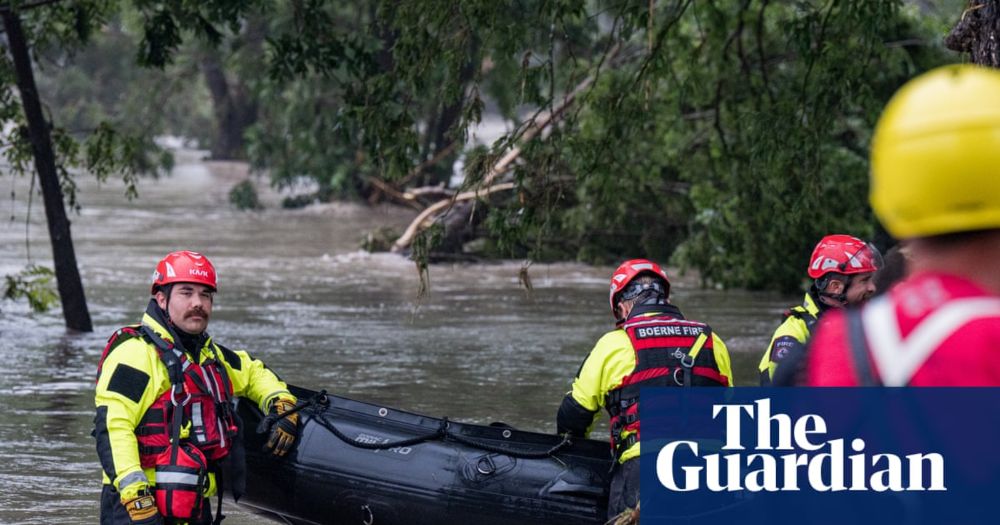
ICYM - Scientists slam Trump administration climate report as a ‘farce’ full of misinformation
- Experts say the report being used to justify the mass rollback of climate regulations has many claims based on long-debunked research
#climatecrisis
www.theguardian.com/us-news/2025...
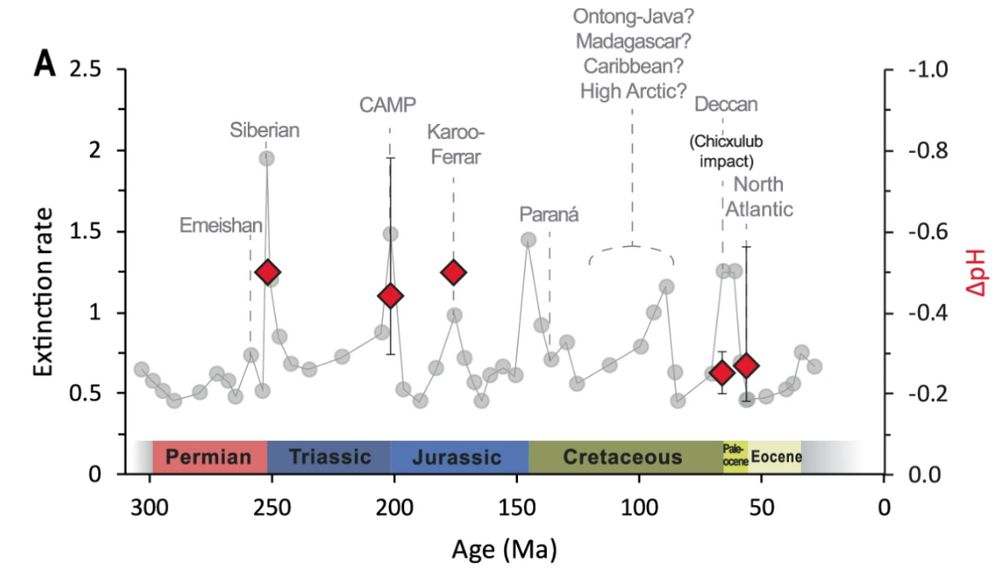
Graph showing extinction rate over the past 300 million years and current pH reconstructions. Mass extinctions are consistently associated with ocean acidification.
More relevant for fossil fuel CO2 are rapid external carbon additions from large igneous provinces and the organic material they often burn up - consistently linked to mass extinction in the geological record www.nature.com/articles/s41...
04.08.2025 10:05 — 👍 9 🔁 3 💬 0 📌 0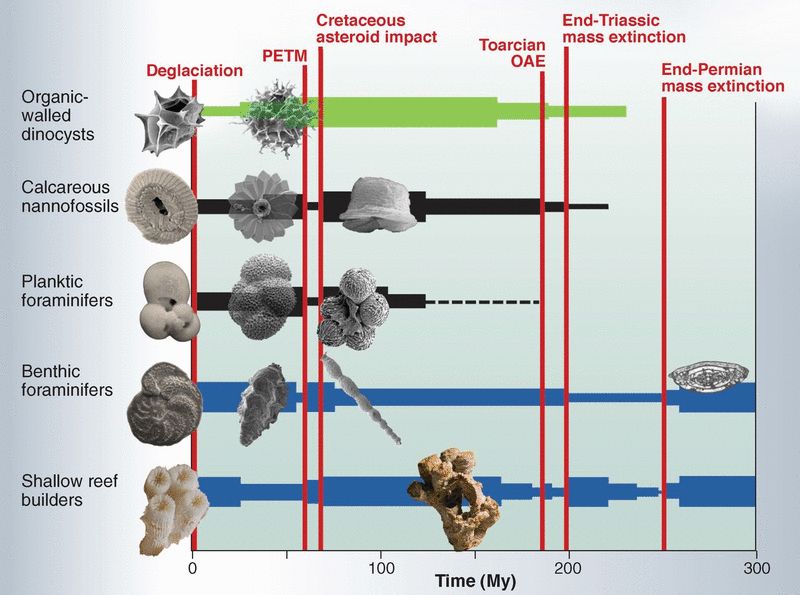
These sorts of relatively slow reshufflings of carbon around the ocean also aren’t a relevant analogue for very rapid addition of carbon from an external source: in former case saturation state changes are muted, while with FF addition saturation state drops sharply www.science.org/doi/10.1126/...
04.08.2025 10:05 — 👍 6 🔁 1 💬 1 📌 0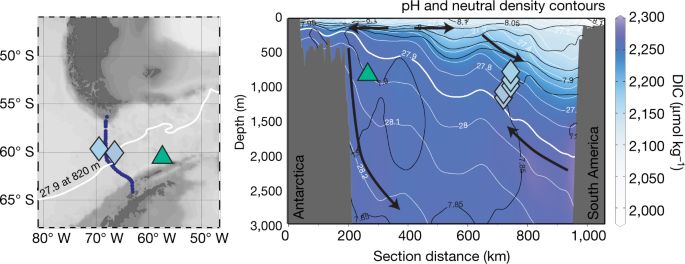
It’s a pretty basic misrepresentation- they use our paper to suggest ice age ocean was more acidic, but we show this was only true for deep Southern Ocean, while upper ocean (much more relevant for OA-sensitive ecosystems) had higher pH! www.nature.com/articles/s41...
04.08.2025 10:05 — 👍 14 🔁 5 💬 1 📌 2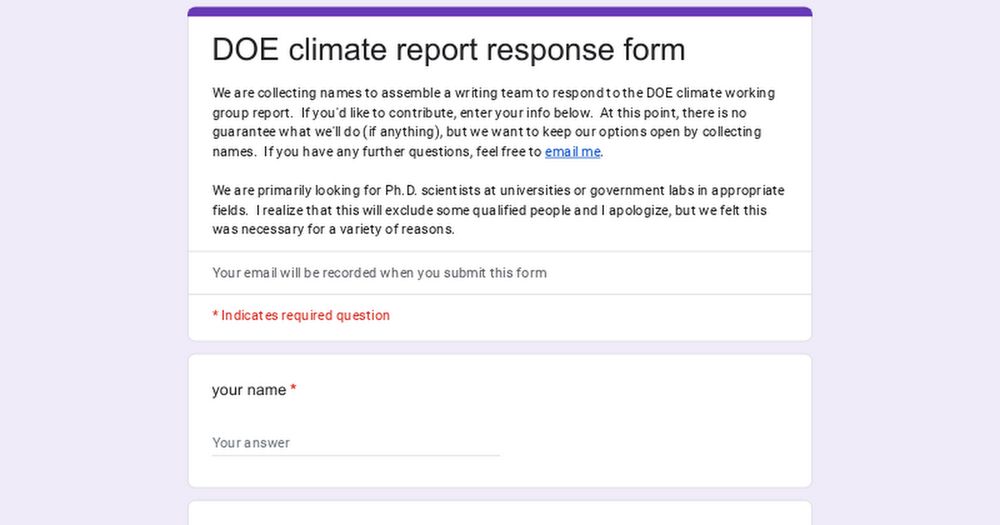
🚨 If you're interested in working on a coordinated response to the DOE climate report, please enter your info on this google form 🚨
Please RT this so as many people see it as possible.
forms.gle/BL9xUAfRxA...

🚨 At least 10 scientists, all cited in the Trump admin's new climate change report, told me that the report completely mischaracterizes their research.
I also found five citations with significant errors, and a paragraph missing an important citation.
I've been taking some time to dive into the US EPA's Proposal to revoke the Endangerment Finding related to Greenhouse Gases.
epa.gov/system/files...
They put forth multiple lines of argument about why the current administration believes this should happen.
🧵
Add me to the list! Rae 2018 misrepresented on page 7: we show deep ocean pH rose out of the ice - but surface ocean pH (the more relevant property for the vast majority of marine life) fell!
Please see thread below on catastrophic impact of geological pH change: bsky.app/profile/mudw...
Motherfucking wind farms…
30.07.2025 17:02 — 👍 47133 🔁 17717 💬 1148 📌 2386Fascinating paper 👇 not only providing evidence for ocean acidification in the end-Triassic mass extinction, but also wider discussion of the role of reverse weathering in prolonging the effects, and how this changed with the evolution of open ocean calcifying organisms. ⚒️🧪
15.07.2025 14:58 — 👍 16 🔁 5 💬 2 📌 0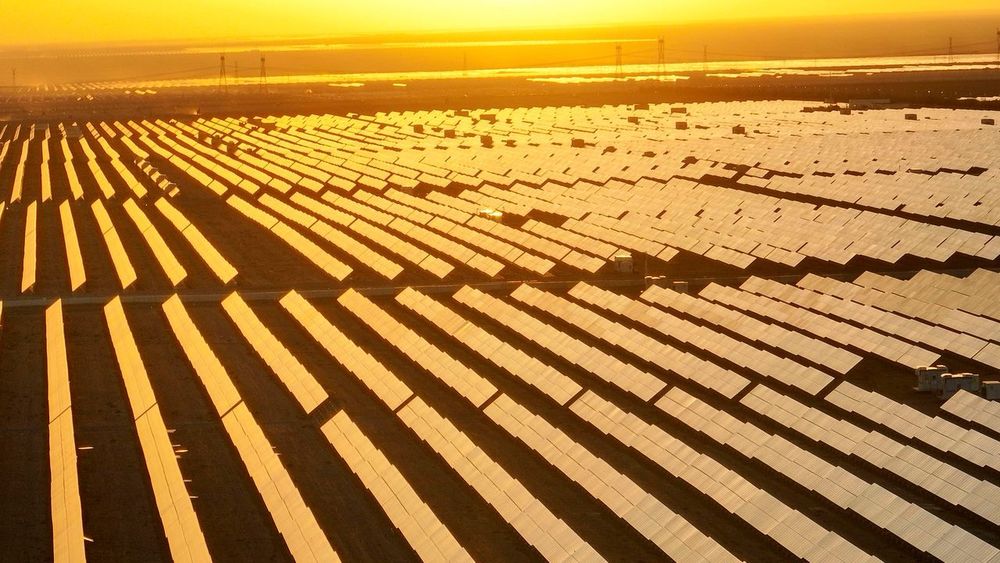
Finally for anyone needing a boost on climate progress in light of record temperatures and an acidifying ocean, please check out this wonderful article by @billmckibben.bsky.social - the challenge is huge, but so is our progress www.newyorker.com/news/annals-... 🧪💡🔌⚡️☀️
15.07.2025 12:46 — 👍 6 🔁 1 💬 0 📌 0Not dumb at all - today the open ocean has lots of tiny planktonic carbonate shells that coat the seafloor when they die. This acts as an anti-acid: CO2 addition is part neutralised by dissolving those shells. But they weren’t around yet in the Triassic/Jurassic.
15.07.2025 04:04 — 👍 1 🔁 0 💬 1 📌 0HUGE kudos to fantastic former @earthscista.bsky.social PhD student @mollytrudgill.bsky.social for leading this work, @carbonatefan.bsky.social for ushering us in to the rock record and being generally the best, and an amazing team including several @uniofstandrews.bsky.social BSc/MSc co-authors
15.07.2025 03:57 — 👍 11 🔁 1 💬 1 📌 0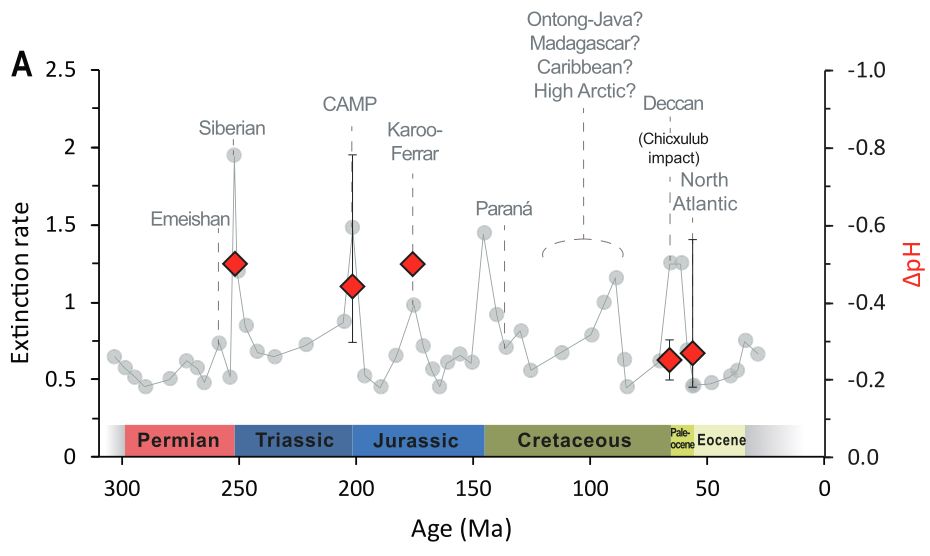
These data demonstrate that ocean acidification is associated with all of the major mass extinctions where we currently have pH reconstructions. The TJ pH drop is similar to possible scenarios in 2100 unless fossil fuel emissions are rapidly reduced. 🐚🌊📉.
15.07.2025 03:57 — 👍 36 🔁 6 💬 1 📌 3